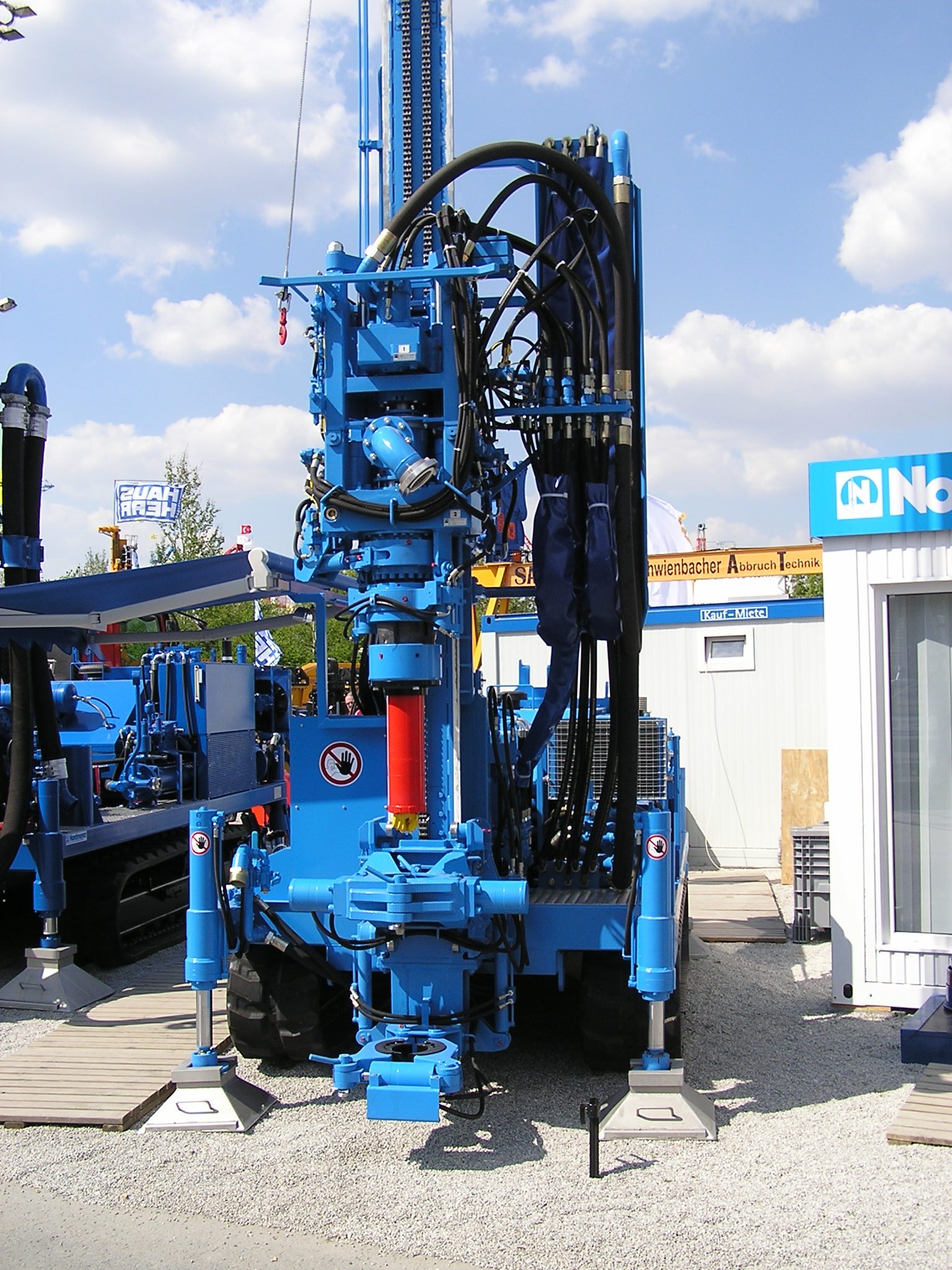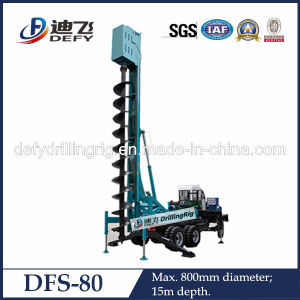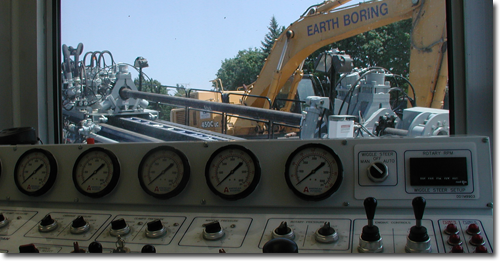Boring (earth)
Geological drilling serve to reach regions of the earth's surface, which are not accessible by other methods. Firstly, with their help, the geological conditions of strata studied, on the other hand they can be used as a transport to bring materials to the surface (eg, petroleum) or to sink it ( eg natural gas in underground storage layers ).
Applications
- Exploratory drilling or drilling are primarily for information gathering from the underground: to investigate the geological conditions in general: rock types, Klüftungsverhältnisse, conditions of the subsoil etc.
- To explore potential deposits (oil, coal, ores, salt, ground water, mineral resources ).
In general, the lessons learned are implemented into commercially viable projects ( extraction of raw materials, tunneling, etc.) and rarely serve purely scientific information acquisition ( holes are expensive ).
- Production wells are used for transporting most liquids. With appropriate prerequisites primary exploration wells to be expanded: Promotion from the depths to the surface (examples): Oil and gas,
- Groundwater.
- Underground interim storage of natural gas,
- Improve oil flow rate by injecting water and chemicals into the oil-bearing strata hydraulic fracturing.
Shallow drilling are sufficient for most applications, with drilling depths of a few meters ( ground investigations ) to a few hundred meters (groundwater, the exploration of deposits ). Often enough mobile drilling rig for its implementation.
Deep drilling to 12,000 meters are rare, technically extremely challenging and very expensive ( examples: the Soviet- Russian Kola bore and the continental deep drilling in Windisch -Eschenbach ). Deep holes require stable, permanent rigs and for application of some several years.
While most holes are on the mainland, but finds oil exploration increasingly also in the sea in the oil-rich shelf areas instead. The rigs used for this purpose are among the largest installations ever. For scientific purposes, holes are made in the seabed from the IODP, the successor to the ODP.
Technology and methods
The drilling technique used depends on the bedrock and the depth to be achieved, for the drilling technology has developed a variety of devices.
Basically, there are two procedures:
- Percussion drilling: the rock material is crushed by wedge action
- Rotary drilling: the rock is rotating drill bit chipped [ evidence ?], eg using the rotary drilling.
- High frequency Drilling ( SONIC ): The drilling tool is set via an oscillator in the drill head to vibrate. At the same time the drill can be rotated ( ROTOSONIC ). The advantage is that the skin friction is reduced on the drill string to a minimum by the generated vibration. The rock is, in this method, both machined and smashed. In geological drilling tools are used, for example, roller bits
- Drill bits, occupied for curing some with industrial diamonds To avoid too rapid wear and overheating of the drill bit, a drilling fluid is in the wellbore during the drilling operation generally pumped, the pressure is also used to stabilize the borehole.
Vertical holes are the "normal" shape of the bore - more or less vertically downwards. But there are also applications where horizontal wells are necessary, such as during tunneling. Modern techniques allow deep drilling in spacious bends from the vertical towards horizontal.
Scientific holes need uncomminuted Storte rock material from which the origin depth must be known. To this end, techniques have been developed (so-called core drill ), which allow the transfer of cores from the wellbore. The drilling profiles obtained with their help give the geological conditions of the subsurface resist meter accuracy. Also, the fed out in the mud drill cuttings allows an estimation of the depth of origin of the sample taken (calculated from ascent rate and the time taken ).










